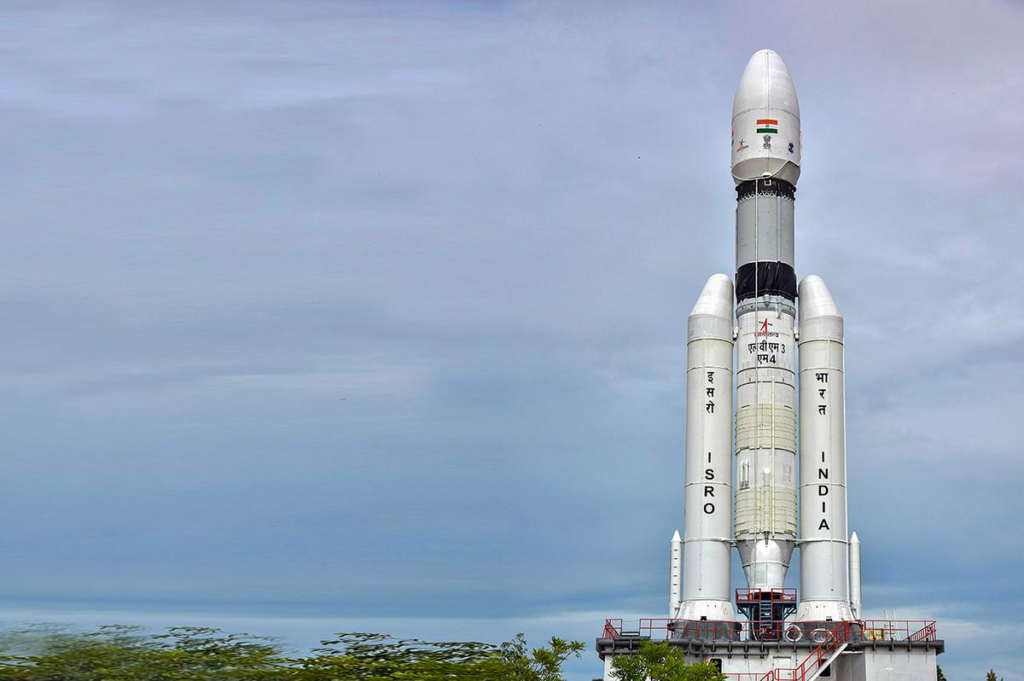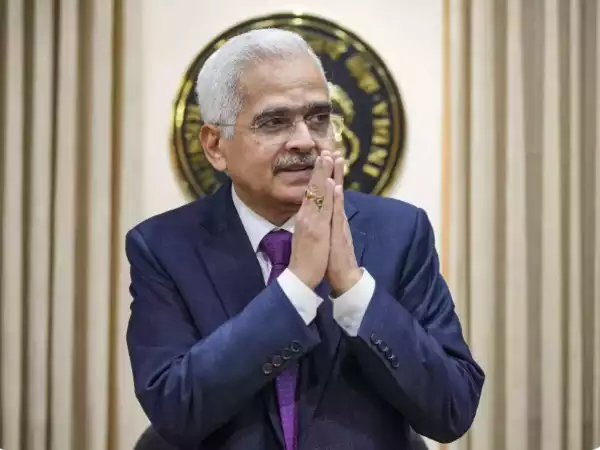Daily Current Affairs
6 December, 2024
International Affairs
1. Presidency of South Africa in the G20: inaugurated

- G20 presidency inauguration ceremony by president Cyril Ramaphosa.
- First in a string of African economies to take the chair in the G20 for here- on-year.
- Theme of thematic presidency: Foster solidarity, equality, and sustainable development.
- Most especially addressing the needs of developing countries, especially those in Africa.
2. Attempt to appoint ‘Facilitator’ at WTO
Context:
India, Sri Lanka and Pakistan have raised concerns at the World Trade Organization (WTO) on attempts to appoint facilitators to oversee the resumption of the stalled agriculture negotiations.
What is Facilitator?
A facilitator-led process in agriculture is a proposal to guide discussions on agricultural topics at the World Trade Organization (WTO) with facilitators appointed by the chair of the agriculture negotiations. The idea is to encourage focused and interactive engagement among members on the various topics under negotiation.
Key Highlights:
- India, Sri Lanka, and Pakistan voiced concerns over the WTO’s proposal for physical facilitator-led agriculture negotiations.
- India conveys that it does not believe in such a process, saying trust deficit as the main reason why talks do not move forward.
- This proposed facilitator-led technique, where facilitators appointed by the chair of the agriculture negotiations are involved, is deemed as undermining ministerial mandates.
- It was mentioned that agriculture negotiations were to be taken immediately in an open, inclusive, and transparent process for a very early resolution and acceptance by the membership.
- This precedent set by the facilitator-led process raises disturbing principles for how the WTO will work. Any decision affecting the processes of WTO, therefore, needs to already adhere to the procedural norms.
National Affairs
1. Aadhaar-enabled payment system (AePS)

Context:
It intends to enhance the onboarding process for service providers of Aadhaar-enabled payment systems under the Reserve Bank of India and formulate further guidelines for positing anti-fraud risk measures.
- Definition and Purpose:
- AePS (Aadhaar-enabled Payment System) is a feature of the National Payment Corporation of India (NPCI) that facilitates financial transactions using Aadhaar numbers.
- It allows customers to access Aadhaar-linked bank accounts for transactions like cash withdrawal, deposit, and interbank fund transfer.
- Role in Financial Inclusion:
- Integrates solutions into existing financial behavior to promote cash utilization.
- Supports the Reserve Bank of India’s goal of electronification for retail use.
- Leverages the registration of 1.33 billion Aadhaar cards (as of June 2022) to expand banking access via UIDAI.
- Key Features:
- Enables basic banking operations using Aadhaar identity and unique identity number (UID).
- Facilitates government financial disbursements.
- Provides secure, interoperable banking operations.
2. Indian Space Research Organization (ISRO) Launches the ESA Proba-3 Mission

Launch Details
- The Indian Space Research Organization (ISRO) has successfully launched the ESA Proba-3 mission aboard the PSLV-C59 rocket.
- The mission took off from the first launch pad at the Satish Dhawan Space Centre, Sriharikota, at 4:04 p.m.
Mission Achievements
- All mission objectives have been achieved.
- ESA is now ready to deploy its satellites into orbit with the required precision.
Mission Components
- The mission comprises two spacecraft flying in formation that will create artificial solar eclipses in orbit.
Commissioning and Operational Phase
- Both spacecraft will be brought together during the initial commissioning.
- The commissioning will take place from mission control at the European Space Security and Education Centre in Redu, Belgium.
- Approximately four months will be needed for the mission’s operational phase to begin, alongside the first corona observations with active formation flying.
Also read: PROBA-3 Mission
3. Gaganyaan Mission Advances and Socio-Economic Benefits

Context: STATUS OF GAGANYAAN MISSION
Human Rated Launch Vehicle:
- Propulsion Systems APIs ground testing has been completed.
- Design and realization of solid motors for Crew Escape System were three stages completed.
- Test Vehicle mission 1 (TV – D1) for performance validation of the Crew Escape System was successfully completed.
Orbital Module Systems:
- Design of Crew Module and Service Module structure is completed.
- Various parachute systems tested through integrated main parachute air drop test and rail track rocket sledge tests.
- Ground test programme towards human rating of Crew Module Propulsion System completed.
Gaganyatri Training:
- Majority of the training programme complete: 2 out of 3 semesters.
- Independent Training Simulator and Static Mockup Simulators also realized.
Ground Infrastructure:
- Commissioned critical ground facilities now including Orbital Module Preparation Facility (OMPF), Astronaut Training Facility (ATF), and Oxygen Testing Facility.
- Realization of Mission Control Centre (MCC) Facilities and establishment of Ground Station Networks nearing completion.
Gaganyaan First Uncrewed Mission:
- Flight integration of Solid and Liquid Propulsion Stages of the human rated launch vehicle completed.
- C32 Cryogenic stage under preparation for flight integration.
Government Initiatives:
- Indian Industries and start-ups spread all over to be more involved in Indian Space Programs.
- Space Sector Reforms announcement for enabling private players to offer a comprehensive service.
- Statement of Indian Space Policy 2023 rolled out in the first week of April 2023 that aims to promote better and larger participation of Non-Government Entities (NGEs) across the entire spectrum of the economy related to space.
- Announcement of opportunities and schemes like ‘Atmanirbharat’.
4. CHANDRAYAAN

Missions and Accomplishments of ISRO Chandrayaan
- All three Chandrayaan missions were successfully implemented by ISRO, with the latest one, Chandrayaan-3, managing to achieve a soft and safe landing on the Moon.
- The Indian government has also planned that by 2040, it will possess all capabilities to reach the target as “Indian land on the moon” through its series of Chandrayaan missions.
Upcoming Chandrayaan Missions:
- Chandrayaan-4 will demonstrate capability to land and return safely from the Moon, whereas Chandrayaan-5/LuPEX is supposed to show the capability of a higher capacity lander.
Cost Effectiveness Goals:
- ISRO is trying to achieve further cost effectiveness in the missions through standardization, indigenization, advanced technologies, and multi-function integration.
Indian Space Policy 2023:
- The Indian Space Policy 2023 brought out in April 2023 was to foster the increased participation of Non-Governmental Entities (NGEs) in the space economy value chain.
Major Landmarks Achieved by ISRO:
- The achievement completion of 15 spacecraft missions, 17 launch vehicle missions, and 5 technology demonstrators since 2021.
Main Accomplishments:
- Satellite launches, including space science missions like:
- Aryabhatta
- Astrosat
- Mangalyaan
- Chandrayaan series
- XPOSAT
- ADITYA-L1
- Indigenous satellite-based Navigation system.
- Different Earth Observation Satellites and communication satellites.
5. Single brand, 30,000 Krishi Sakhis and ‘easier’ certification for farmers: What’s new in natural farming guidelines

Essentials and Details of the National Mission on Natural Farming (NMNF): Guidelines
The National Mission on Natural Farming (NMNF) initiated its operations on 25 November 2024 for chemical-free farming across the country. It aims at reducing the dependence on chemical inputs along with soil health for the farmers, input cost reduction, climate resilience, and improvement of livelihood for the farmers. The details of the key components under this mission are provided as guidelines below.
An Overview of the Mission
- Launch date: 25th Nov, 2024
- Purpose of the mission: To catalyze natural farming (NF) in the entire country and to move farmers from present chemical-based practices toward a more sustainable, chemical-free farm.
Focus Areas:
- Soil health improvement
- Decrease in input costs
- Greater resilience to climate
Operational Guidelines for NMNF
The National Mission on Natural Farming operational guidelines have been issued and include several strategies to make the adoption and promotion of natural farming easier throughout India.
- Dharamshala transition and Jan Bhagidari: The mission shall be driven by a mass movement.
- Region-Customized Solutions: Tailoring the guidelines with region-specific solutions so the mission can be home-grown to all the different agro-climatic regions.
Salient Features of the Guidelines
- Common Standards and Certification Procedure:
- Common standards will be scientifically started for natural farming practices.
- A simple, farmer-friendly procedure for certification of organic and chemical-free products will be developed.
- A National Brand in Natural Farming:
- A single national brand to promote and market naturally grown, chemical-free produce.
- Separate Body for Policy and Implementation:
- National Steering Committee (NSC): For making policy decisions.
Also read: Organic Farming
6. Shri Pralhad Joshi has launched ‘Anna Chakra’
Context:
Shri Pralhad Joshi has launched ‘Anna Chakra’, a tool for optimizing the Public Distribution System supply chain and a portal for Subsidy Claim Application for NFSA.

Launch of ‘Anna Chakra’ and SCAN Portal
The Union Minister of Consumer Affairs, Food and Public Distribution and New & Renewable Energy, Shri Pralhad Joshi, recently unveils two major public initiatives for reforming the PDS-and-subsidy claim systems:
- ‘Anna Chakra’: PDS Supply Chain Optimization Tool
- SCAN (Subsidy Claim Application for NFSA) Portal.
The highlights of these initiatives are:
‘Anna Chakra’ – PDS Supply Chain Optimization:
- The Department of Food and Public Distribution is at the helm of affairs.
- This will focus on improving the logistics network of the country in the PDS.
- Developed in collaboration with:
- World Food Programme (WFP)
- Foundation for Innovation and Technology Transfer (FITT), IIT-Delhi
- Advanced algorithms are used to:
- Identify optimal routes for food grain distribution.
- Ensure seamless movement across supply chain nodes.
- Invest in a complicated supply chain from farmers to Fair Price Shops (FPS).
- The goal is to improve the speed and efficiency of India’s food security program, which serves 81 Crore beneficiaries.
Benefits of ‘Anna Chakra’:
- Enhanced efficiency and saving in costs:
- Shortened delivery routes will consume less fuel, time, and logistics.
- Environmental benefits:
- Lower transportation-related emissions means a reduced carbon footprint.
Route Optimization Results:
- The tool has been tested for 30 states.
- Estimated cost savings of about 250 Crores per annum.
- QKM: The objective function for Quantity in quintals x distance in KMs has decreased by 58 Crores.
- The optimization will cover 4.37 Lakhs Fair Price Shops and approximately 6,700 warehouses.
Major Integrations in ‘Anna Chakra’:
- Interstate route optimization tool: Optimizes PDS movement between states.
- Integrated with:
- FOIS (Freight Operations Information System).
7. National Library Mission
National Mission on Libraries Scheme of Ministry of Culture
- State Central and District Libraries have been provided grants in each State/UT.
- Infrastructure development, technology upgradation, and modernization of services
- Establishment of facilities for Specially Abled groups Creation of reading resources procurement for local needs Advocacy and outreach programmes Digitization of libraries as per Seventh schedule of the Constitution of India.
- Details were confirmed by the newly elected Union Minister for Culture and Tourism, Shri Gajendra Singh Shekhawat.
8. Ashtalakshmi Mahotsav 2024

Context:
Ashtalakshmi Mahotsav 2024: The Celebration of Culture and Economies of Northeast India
Culture-History of Northeast India
- For the first time ever, the Ashtalakshmi Mahotsav will take place from December 6-8, 2024, at Bharat Mandapam, Pragati Maidan in Delhi.
- It will speak the beauty, diversity, and promise of the eight states of Northeast India-Assam, Arunachal Pradesh, Meghalaya, Manipur, Nagaland, Mizoram, Tripura, and Sikkim.
Purpose and Significance: - Showcase vibrant textile sectors, tourism potential, traditional crafts, and unique Geographical Indication products.
- Underpin infrastructure development in Northeast India and transform magic.
Mascot of Mahotsav: Purvi
- Purvi is the young girl who represents all the eight states of Northeast India. Going to represent the region’s culture, heritage, and aspirations.
The Event Highlights:
More than 250 artisans with their unique handicrafts, handlooms, agri-horti products which include 34 GI tagged products. Technical sessions shall cover the areas of development such as women’s leadership, IT, energy, healthcare, etc. In the Investors Roundtable, discussion possibilities are going to be with respect to the sectors handicrafts, agriculture, and tourism. The Design Conclave and Fashion Show will integrate traditional and modern fashion. Ashtalakshmi Grameen Haat will recreate a traditional market atmosphere.
Investment Opportunities in Northeast India
- Key growth emerging, which has bright promises to shape the future of the region, each under Madhya Pradesh’s Inaugural Development Investment.
- Infrastructure development, handloom, and so on.
9. PM-Vidyalaxmi scheme: to provide financial support to meritorious students

PM Vidyalaxmi: A Central Sector Scheme for Meritorious Students
Introduction
- PM Vidyalaxmi, a Central Sector scheme, is approved by the Union Cabinet, chaired by Prime Minister Shri Narendra Modi.
- The scheme aims to provide financial support to meritorious students, ensuring they can pursue higher studies.
Eligibility
- Students who enter 860 top Quality Higher Education Institutions (QHEIs) will be eligible for tuition fee and course-related charge loans, collateral-free and guarantor-free.
- The scheme will be opened up for the best QHEIs of the country as ranked by NIRF.
- The scheme is applicable to top-quality higher educational institutions as determined by the National Education Rankings (NIRF).
- Students with an annual family income of up to ₹8 lakhs and not eligible for benefits under any other government scholarship or interest subvention schemes will receive a 3% interest subvention for loans up to ₹10 lakh during the moratorium period.
Loan Features
- Collateral-free and guarantor-free loans to cover tuition fees and course-related expenses.
- Credit guarantee of 75 percent for loans of ₹7.5 lakhs and below.
- 3 percent interest subvention for loans up to ₹10 lakh during the moratorium period.
Implementation
- The scheme will be administered through a transparent, student-friendly, and inter-operable system.
- The Department of Higher Education will have a unified portal for applying for education loans and interest subventions.
Policy Alignment
- The scheme is a key initiative from the National Education Policy, 2020, which recommends financial assistance for meritorious students in both public and private Higher Education Institutions (HEIs).
Supplementary Initiatives
- PM Vidyalaxmi will supplement the Central Sector Interest Subsidy (CSIS) and Credit Guarantee Fund Scheme for Education Loans (CGFSEL), two component schemes of PM-USP.
Banking/Finance
1. Monetary Policy Review: RBI’s Liquidity Management

Context:
Liquidity management will be the main theme of the Monetary Policy review on behalf of central bank
Key Highlights:
- Economists of Standard Chartered Bank and ICICI Securities Primary Dealership expect a cash reserve ratio cut.
- The central bank may also conduct long term repo operations or open market operations (OMO purchases), for injecting liquidity into the financial systems
- Headline liquidity appears to in a deficit of 1 lakh crore to 1.5 lakh crore. Durable liquidity would be marginally negative on account of the seasonal upturn in currency-in-circulation combined with advance tax payments and outflows from reserves of foreign currency.
- 25 basis points cut in CRR will inject ₹58,000 Crore liquidity into the banking system.
2. RBI Monetary Policy Meeting outcome: Shaktikanta Das-led MPC keeps repo rate unchanged at 6.5%, cuts CRR by 50 bps to 4%

RBI Cuts CRR, Maintains Repo Rate
Major Policy Decisions
CRR Reduction:
- The RBI lowered the Cash Reserve Ratio by 50 basis points: going down from 4.5% to 4%.
- The above CRR will unlock Rs 1.16 lakh crore in liquidity, thereby strengthening banks’ lending capability. CRR is that part of total deposit of a bank which is required to be kept in liquid cash with RBI.
- Repo Rate Left Unchanged: The Monetary Policy Committee (MPC) resolved to keep the repo rate at 6.5% in a 4-2 majority vote. The 11th straight policy announcement by Repo rate in 22 months without an alteration.
Economic Growth & Inflation Forecast
- Economic growth forecast downward revision:
- The projection of growth in Gross Domestic Product during FY2025 has been revised down to a growth of 6.6 per cent as against earlier estimated growth of 7.2 per cent.
- These require a revision in growth forecasts on the basis of the second quarter of the year, with particular impact.
- Growth is recovering nonetheless on festive demand and rural consumption. – Inflation forecast has increased:
-The forecast for retail inflation for FY2025 is now 4.8%; it was previously forecast at 4.5%.
–Inflation has gone up to 6.21% in October 2024, its highest level in 14 months, primarily due to prices of food.
Reasons Behind CRR Cut
Liquidity Infusion for Banks:
- This cut in CRR aims at providing liquidity infusion to the financial system, which has been sucked dry due to RBI’s intervention in stabilizing the rupee.
- Rs 1.16 lakh crore will be available now for lending, and can therefore help in stimulating economic growth.
- Impact on Bank Lending: The Total available funds will induce more lending at banks.
3. RBI to deploy AI for hunting down mule accounts

Context:
Central bank of India has developed an AI/ML based open-source tool known as MuleHunter.AI to trace killer accounts used in financial frauds.
Key Highlights:
Successful Pilot: The two state-run banks that piloted it succeeded in more collaboration within the Reserve Bank Innovation Hub (RBIH) for the development of the tool.
Ongoing RBI Efforts Against Digital Frauds: RBI has launched numerous initiatives such as strengthening cyber security, issuance of fraud prevention guidelines, and transaction monitoring among many others to tackle digital fraud in the financial sector.
Mule Accounts and Financial Frauds: In the financial fraud world, mule accounts serve as a transfer point for fraudsters, who use it to channel illegal transactions. The RBI is working on a hackathon on Zero Financial Frauds specifically around mule accounts.
Increasing Mule Account Activity: The mule account activity in India is on the rise. Cities such as Bhubaneswar, Lucknow, and Navi Mumbai are the top three with the highest numbers.
Encouraging Innovation: The hackathon is also an initiative by RBI to encourage development efforts of such innovative solutions fighting against mule accounts and frauds.
Industry Support: The CEO of KiyaAi, Rajesh Mirjankar, termed MuleHunter.AI as an “AI-driven initiative,” which is very significant for the “detection and prevention of fraud,” specifically mule accounts fraud.
Collaborative Approach: According to RBI, enhanced collaboration among regulators, banks, and fintechs will build a secure and tech-driven financial ecosystem.
4. RBI raises interest rate ceiling on FCNR(B) deposits to attract capital flows

RBI Raises Interest Rate Cap on FCNR Accounts (Banks)/FCNR(B) Deposits for Foreign Currency Non-residents.
- RBI is setting ceilings for interest rates in FCNR(B) deposits from Dec 6, 2024 to attract more foreign capital inflows.
- It is here where banks are allowed to raise fresh FCNR(B) deposits maturity of one year and less than three years as from December 6, 2024 without exceeding the overnight Alternative Reference Rate (ARR) by 400 basis points (bps).
- For deposits ranging from 3 years to 5 years maturity, the cap has been raised to overnight ARR plus 500 bps.
- This is going to be in effect until March 31, 2025.
- This was after the external reserves of the country dipped from a level of an all-time high of $704.89 to $658.091 billion.
- It is worth noting that FCNR (B) deposits can be both countable through residents and originate in any of these currencies: pound sterling, US dollar, Japanese yen, euro, Canadian dollars, and Australian dollars.
Agri Business
1. Indian government encouraging fruits, vegetables, maize to reduce stubble burning

A High-Value Crop Initiatives
Indian Govt.
- By considering alternatives like high-value crops such as fruits, vegetables, and maize rather than low-value cereal, the stubble burning would decrease dismantled by the Indian government.
- For the endorsement of maize cultivation in Punjab and Haryana, the Indian Council of Agricultural Research (ICAR) has actively launched various outreach programs.
- With the beginning of the Crop Diversification Programme (CDP), paddy crop will move toward oilseeds, pulses, coarse cereals/nutri-cereals, cotton, and agri-silviculture by the Department of Agriculture and Farmers Welfare.
- Reduction in Paddy Straw Burning: There has been a reduction in the number of events in which paddy straw is burnt from 42,962 in 2023 in Punjab, Haryana, and Uttar Pradesh to 18,457 in the present year, recording a 57% reduction in the burning of paddy straw compared to last year.
- Meat, and Edible Offal: Export of oxen, and calves for meat and edible offal under the Foreign Trade Policy in matters of such commodities are wholly banned and disallowed.
- Local Environment:
- Cotton Cultivation Area: Declined due to:
- Non-uniform pattern of rainfall
- Extreme temperature during the growing season
- Weed infestations
- Infestations of whiteflies, pink bollworm, cotton leaf curl viral disease
- Shift to other more remunerative crops.
- Cotton Cultivation Area: Declined due to:
- Minimum Support Price (MSP): Through purchase at MSP, when the corresponding market price falls below that of the set MSP, this instance proves to protect the interest of farmers.
- Along with the oil palm plantation, this form of irrigation would be popularized by the Government through subsidies so that optimum use of water would be used.
- Market Intervention Scheme (MIS): This scheme is run by the Government for the welfare of farmers. Farmers of perishable horticultural crops, such as onions, are guaranteed a price.
2. Collateral-free agriculture loans limit upped from ₹1.6 lakh to ₹2 lakh

Context:
RBI Increases Collateral-Free Agriculture Loan Limit
Highlights:
• RBI increases the limit of agriculture loans that are collateral-free to the borrower from ₹1.6 lakh to ₹2 lakh.
• The decision had been taken due to rising inflation and agricultural input prices.
• The limit was available at ₹1 lakh during 2010 and ₹1.6 lakh in 2019.
• The move seeks to enhance coverage for small and marginal farmers under formal credit.
The KCC loans exceeding ₹1.6 lakh but upto ₹3 lakh can be issued against collateral free if a Tri-Partite Agreement is in place.
Source: Business Line
3. Matix Fertilisers gets FAI award

Matix Fertilisers and Chemicals Ltd (Matix) awarded ‘Best Production Performance of an Operating Fertilizer Unit for Nitrogen (Ammonia and Urea)’ 2023 -2024 awarded by.
- The Union Minister of State for Chemicals and Fertilizers and Health and Family Welfare, Anupriya Patel, awarded the prize to Giridhar Mishra, Chief Operating Officer.
- Nishant Kanodia, Chairman of Matix, expressed pride in the recognition and emphasized the company’s commitment to sustainable practices and advanced technologies.















